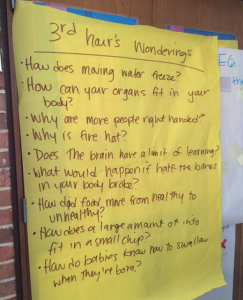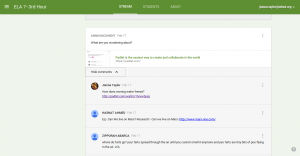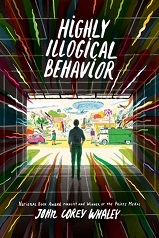 Young adult (YA) literature often gets a bad rap. As a high school librarian, I hear the worst of the stereotypes often. One of the most common is that YA literature is too “dark” or “heavy” or “moody.” I find this perspective perplexing.
Young adult (YA) literature often gets a bad rap. As a high school librarian, I hear the worst of the stereotypes often. One of the most common is that YA literature is too “dark” or “heavy” or “moody.” I find this perspective perplexing.
“Dark” murder mysteries and spy thrillers dominate adult best-seller lists. The independent novels that seem to thrive and become blockbuster films are often “heavy” (e.g., Room, by Emma Donoghue; Orphan Train, by Christina Baker Kline; and Me Before You, by JoJo Moyes). Many assume that teenagers want to read about serious, unappealing life issues like death, addiction, and mental health concerns because teenagers are “moody.” They don’t imagine that teenagers would search for literature featuring characters their age, dealing with legitimate life events in a realistic and not-always-happy way.
Over the summer, I read John Corey Whaley’s latest book, Highly Illogical Behavior, and found what might be the perfect book about a serious issue for both teenagers and the people who love them.
The Plot
High school senior Lisa desperately wants to get into a top psychology program and leave her former life in the past. But she is stumped by her entrance essay, which requires her to write about a “personal experience with mental health.”
Then she remembers Solomon, the boy from eighth grade who had a panic attack, jumped in a fountain on campus, and never came back to school. He’s the boy that she believes no longer leaves his house–ever. If she can find him, and “fix” him, she can write the perfect entrance essay, complete with a neat and tidy solution. But getting to know Solomon, and letting him into her life, changes them both in ways that neither could ever have predicted, which makes it pretty hard for Lisa to come clean about why she befriended him in the first place. Can their newfound friendship survive if it is based on a lie?
Why It’s Worth Reading
There is most definitely some hard-hitting reality in this book. Agoraphobia is not a frequently discussed mental health issue, especially as it pertains to teenagers. Lisa’s relationships with Solomon and her boyfriend, Clark, are incredibly complex and not always pretty.
But John Corey Whaley’s characteristic writing style is also filled with humor, sarcasm, and enough levity to make this book seem like less of a downer than some of its companions. I found myself chuckling at Solomon and Clark’s conversations, or at nearly everything that Solomon’s dad utters. It’s a “serious issue” book that teens can enjoy and adults can embrace.
And while the story was predictable at a few points, I found myself compelled to read it–while I was brushing my teeth every night, for example, because I just couldn’t wait two more minutes to get started. I think it’s because Whaley writes supremely believable, realistic, honest characters. They’re characters that remind you of people you know in real life. He makes you care about them and what’s going to happen to them, even if you think you probably already know where they are headed.
That’s what made this book appealing and kept me reading as I drooled toothpaste down my shirt. Grab a copy and spend a couple of minutes reading Highly Illogical Behavior while you brush your teeth. I guarantee you won’t want to stop.
Book Details
Reading Level: Lexile = HL700L
ISBN: 9780525428183
Format: Hardcover
Publisher: Dial Books
Publication Date: May 10,2016
Awards/Accolades: Four starred reviews in four months. Watch this one during award season–Whaley has already won a Printz, a Moris, and been a National Book Award finalist.
Source: Penguin First To Read (I received a free e-galley in exchange for my honest opinion.)
 Bethany Bratney (@nhslibrarylady) is a National Board Certified School Librarian at Novi High School and was the recipient of the 2015 School Librarian of the Year Award. She reviews YA materials for School Library Connection magazine and for the LIBRES review group. She is an active member of the Oakland Schools Library Media Leadership Consortium as well as the Michigan Association of Media in Education. She received her BA in English from Michigan State University and her Masters of Library & Information Science from Wayne State University.
Bethany Bratney (@nhslibrarylady) is a National Board Certified School Librarian at Novi High School and was the recipient of the 2015 School Librarian of the Year Award. She reviews YA materials for School Library Connection magazine and for the LIBRES review group. She is an active member of the Oakland Schools Library Media Leadership Consortium as well as the Michigan Association of Media in Education. She received her BA in English from Michigan State University and her Masters of Library & Information Science from Wayne State University.

 A few months back,
A few months back, 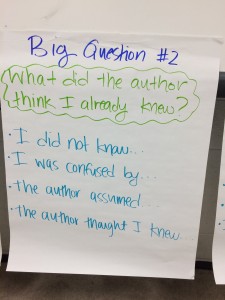
 Jianna Taylor (
Jianna Taylor (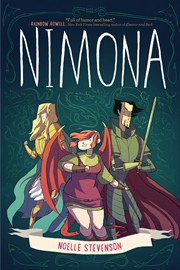
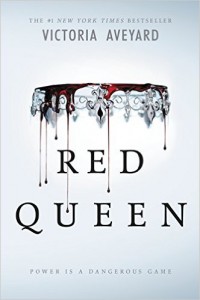
 Long breaks from work and school are the perfect time to squeeze in some reading. But what to choose?
Long breaks from work and school are the perfect time to squeeze in some reading. But what to choose?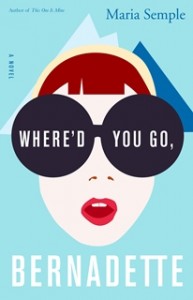
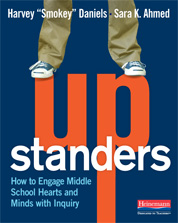 Anyone who knows me knows that I am a voracious reader (comes with the English teacher territory, right?). Anyone who knows me really well knows that I’m not just reading books for pleasure, but that I’m a voracious reader of professional books. Case in point: I read five books about grading last summer. Riveting stuff.
Anyone who knows me knows that I am a voracious reader (comes with the English teacher territory, right?). Anyone who knows me really well knows that I’m not just reading books for pleasure, but that I’m a voracious reader of professional books. Case in point: I read five books about grading last summer. Riveting stuff. Upstanders
Upstanders